Architectural Sunscreens Take the Heat Off Homes
Go ahead and say it out loud: brise-soleil (bree so-LAY). Sounds nice, doesn't it? Maybe you just received a little impressed head nod from your coworker or a curious look from you cat. It rolls effortlessly off the tongue and translates from the French as "sun block." Usually defined as a permanent architectural element, it has the double benefit of mitigating the harsh sun and heat while simultaneously providing visual interest to a facade.
Major credit for these sun-blocking structures goes to architect Le Corbusier, with his use of exterior grid-like concrete fixtures in the 1950s to help keep the interiors of buildings cooler in hot climates, such as with his Chandigarh project in India.
Today we see contemporary versions of these sunshades (generally lighter and often rendered in thin wood or metal slats) on homes throughout many regions.
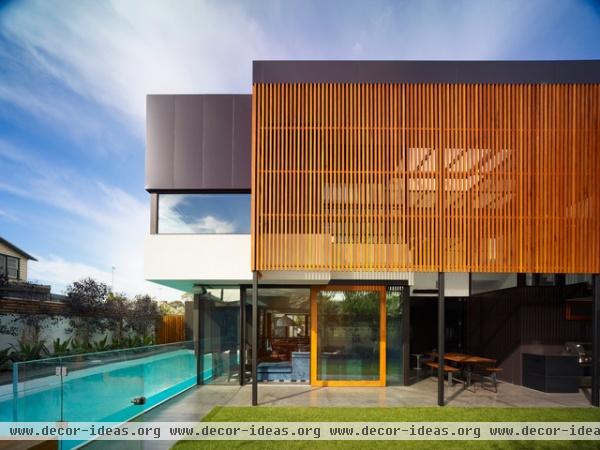
Think of a brise-soleil as blinds on the exterior of a home. It does the same heavy lifting of blocking out unwanted heat gain as interior blinds or curtains. Yet since the location is on the exterior, it blocks the heat from the sun's rays before they even hit the glass and enter the interior space, keeping your home cooler.
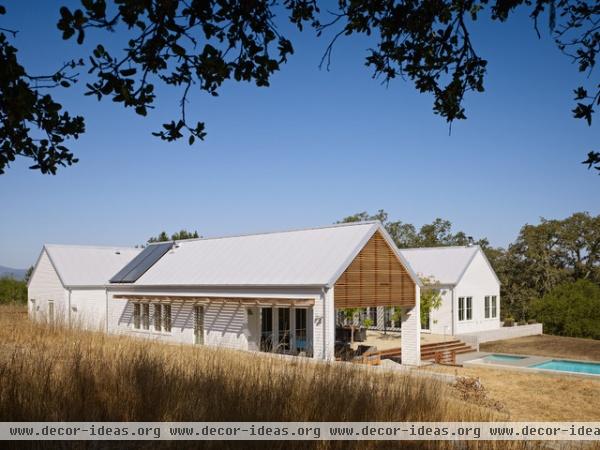
Check out the shadows from the structure above the window and doors on the side of this home, visual proof that screens can block out intense sun.
To maximize the effectiveness of fixed louvers, pair up with a local architect to analyze the specific location of your house, including the climate zone and latitude in which the project sits.
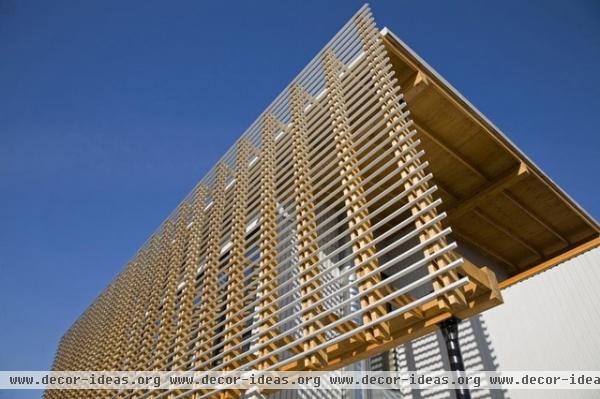
Horizontal fixtures work best on southern facades, while vertical fixtures mitigate the sun more effectively on east and west facades — due to the sun's angle in the sky throughout the day.
The screen can also be an independent statement, as shown here, standing proud of the glass windows. It can blend into the facade, too.
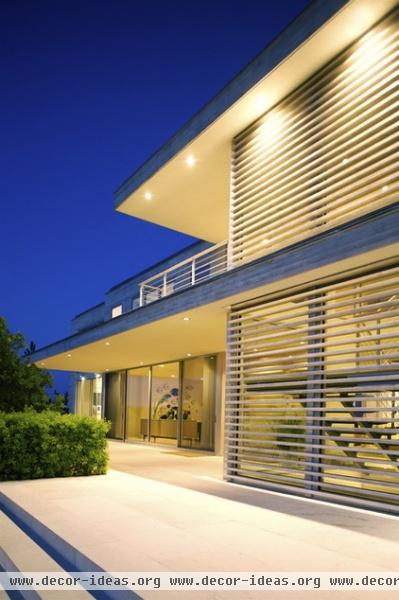
Take the material of the sunscreen into account. Here the color and material of the slats match the rest of the architecture.
At night the screen adds privacy to an otherwise full-height glass wall.
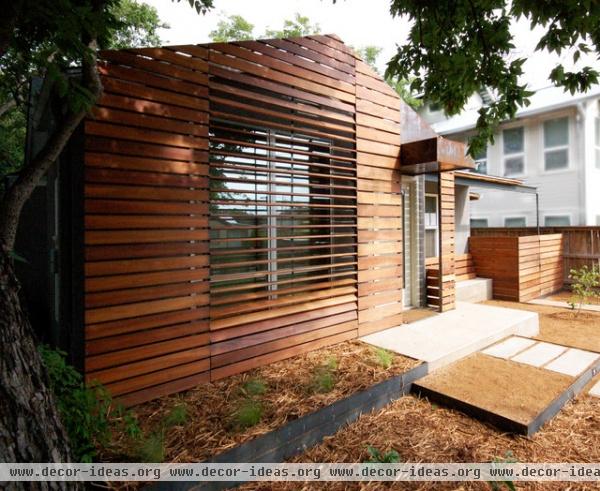
The brise-soleil in front of the window here is integrated with the overall facade, since it's all constructed of the same material. In this case the entire wood screen is slightly detached from the existing home and reinforces the original form.
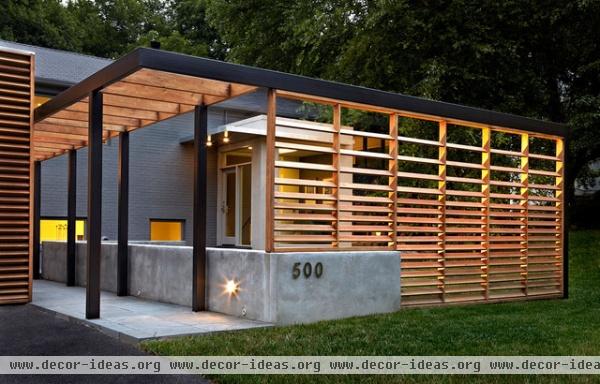
When a screen is significantly detached from the architecture, it defines a semiprivate exterior room adjacent to the home. The number of slats decreases with the structure's height here, providing another layer of visual interest.
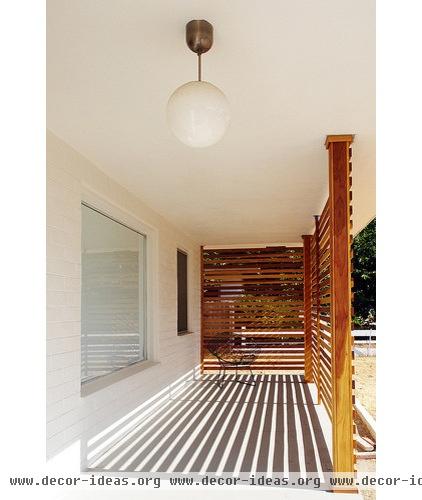
Here the brise-soleil defines a simple exterior space that lies between the realm of sun and shadows.
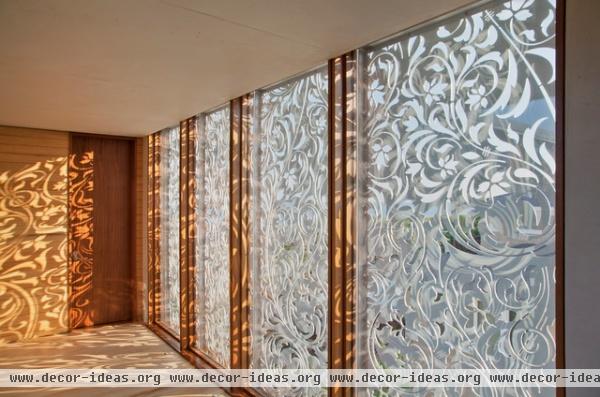
The beauty of the sun is that it is dynamic — always moving and changing our environment. A sunscreen can act as a permanent piece of artwork that harnesses and expresses this movement. An elaborate custom metal screen like this creates shifting patterns as the day progresses.
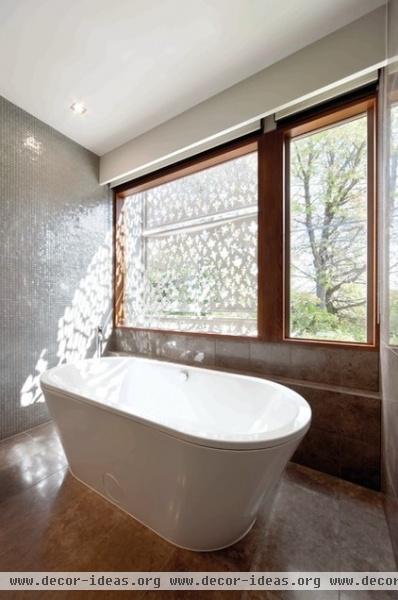
These playful shadows provide a tranquil environment and a unique veil of privacy on the interior.
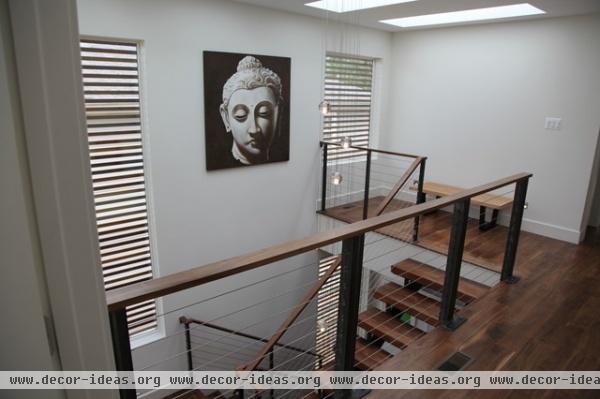
A simple wood slat mounted to the exterior creates a sophisticated interior here, while constantly working to cut out solar heat gain before it even hits the glass.
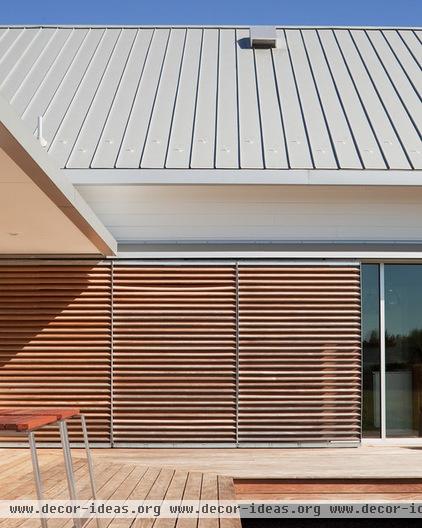
These screens are on tracks, creating interactive architectural objects that conceal or reveal the glass facade, depending on the homeowner's preference.
Consider these many variations of the contemporary brise-soleil the next time you need to protect your home from solar heat gain or gain privacy.
Tell us: Are you ready to live in the zone of filtered light and shadows?
More: See Light Play in 14 Homes From Paris to Texas












